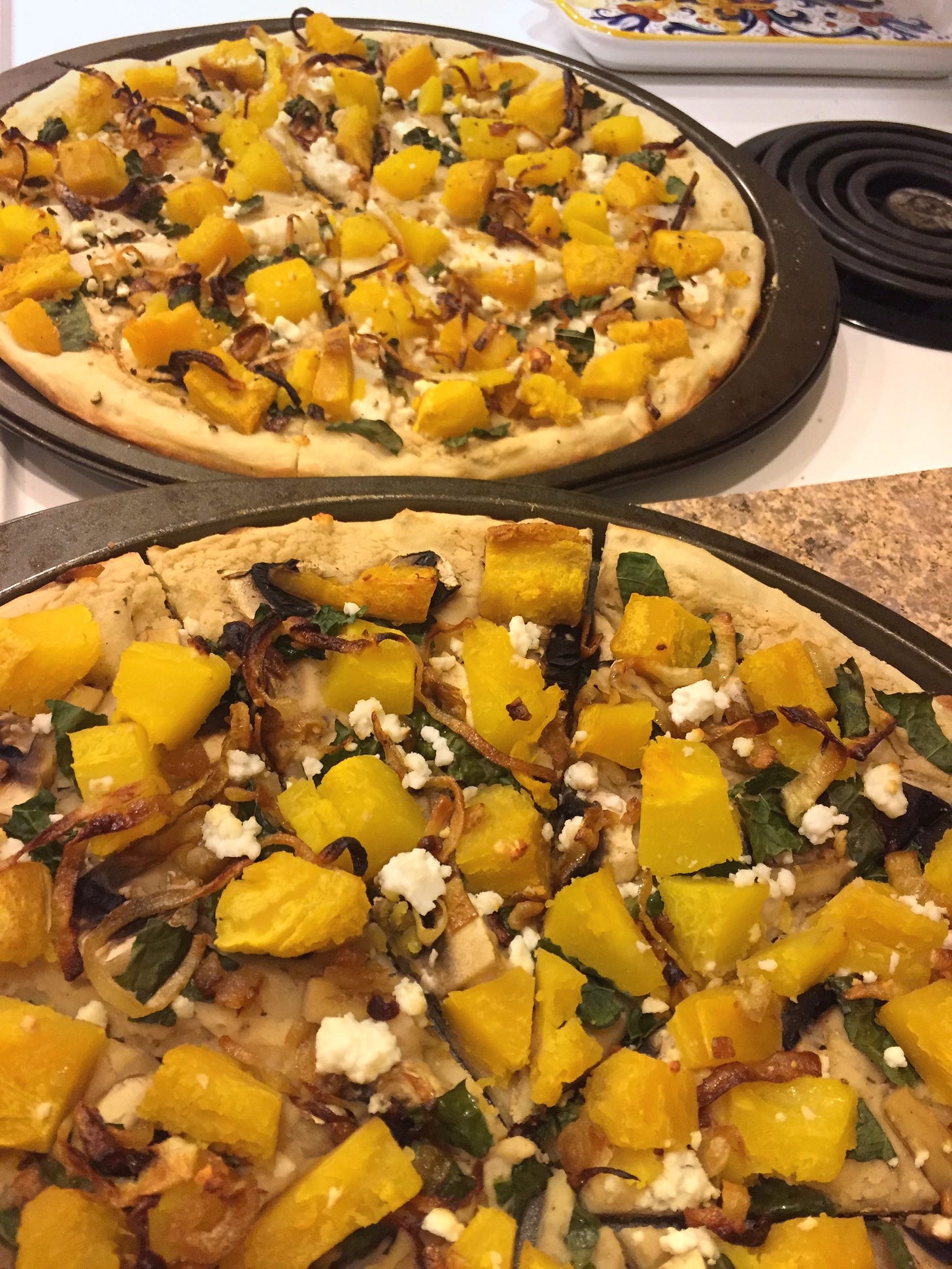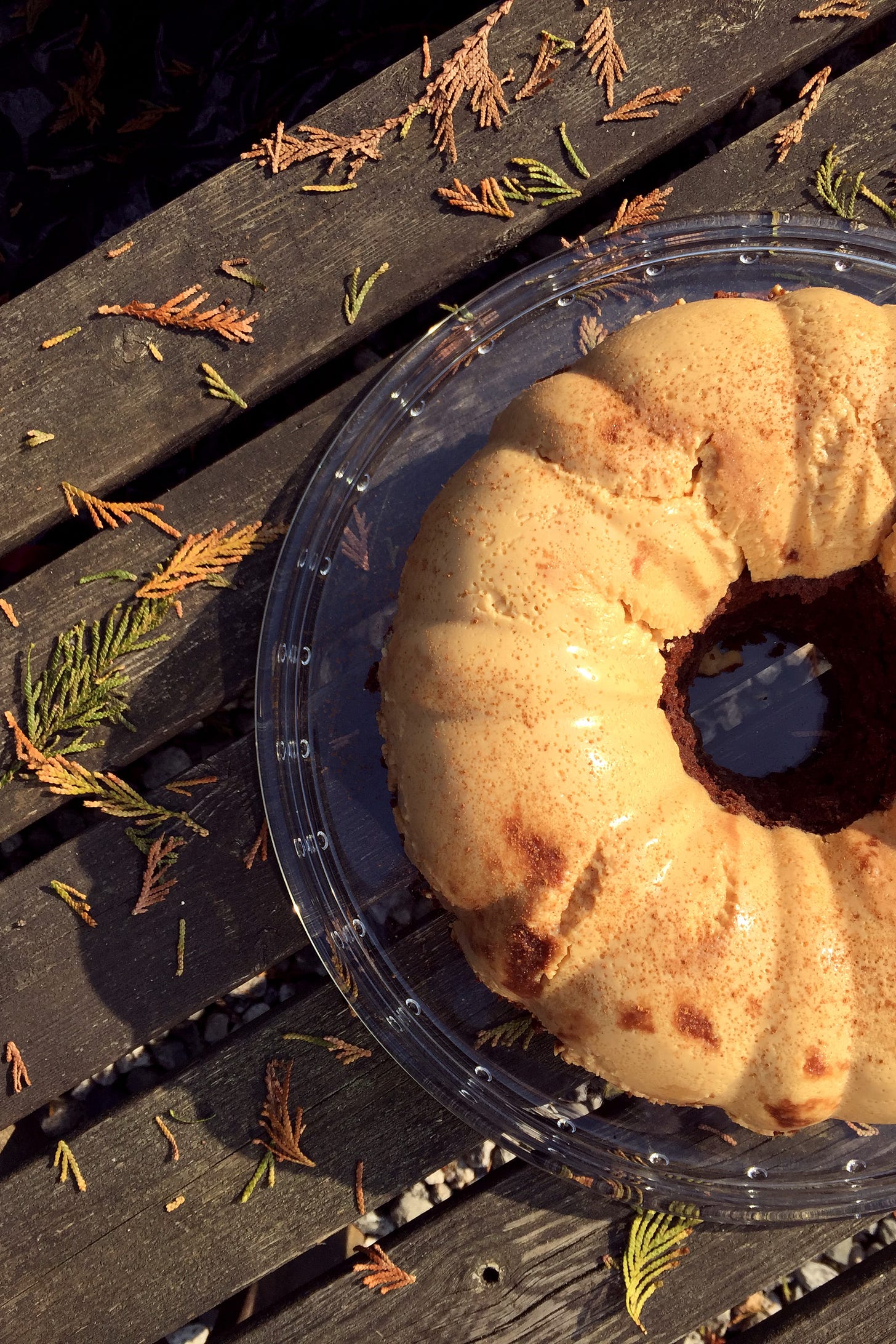Amid everything else that’s happening, I’m thankful for the week of warmth and sunshine we’ve had. On the weekend we drove to Squamish mostly just to get out of town for a bit, but we picked up some beers at Backcountry and got a takeout lunch to eat at Sunny Chibas’ setup of picnic tables in the old drive-thru (the fried chicken was excellent). During the week I also rode my bike to Ambleside to meet up with my sister, where we had some iced coffee and a chat on the beach. I love autumn but I feel the need to enjoy these days when they come— it’s easy to feel you’re ready for fall when summer has just ended, but I know by late November I will be wondering when the last time I saw the sun was and if my feet will ever be warm again.

Lately I’ve been getting prepared for the cooler, darker months by filling my freezer with soups, broths, and sauces made from harvest bounty (we are lucky enough to have a small deep freeze). When it finally rained and the smoky air cleared, I made chicken stock with a couple of bags of bones I had saved up in the freezer. It takes all afternoon but is very little work, and as a bonus it makes your house smell like lovely, comforting soup. The method in Salt, Fat, Acid, Heat is what I like to use for its simplicity— I looked at Thomas Keller’s version in Bouchon, but it was a bit fussy to just make for my freezer and not a Michelin-starred restaurant.
I also made mushroom stock after we accidentally bought too many brown mushrooms and they were threatening to go slimy. For vegetarian stocks I tend to use Bryant Terry’s directions (he has several standard and specialized stock recipes in Vegan Soul Food), though veggie stocks in general are pretty forgiving: it only takes an hour or two, you can make them entirely out of scraps if you want, they won’t be ruined if the heat is a little too aggressive. The mushroom stock gets a lot of flavour from also using dried shiitakes, which are usually fairly cheap if you can get them at an Asian grocery store. I like mushroom stock to use in place of beef stock for vegetarian versions of recipes, and for things like mushroom soup or vegan gravy that will have an even richer mushroomy flavour using it in place of vegetable broth.
Our acorn squash plant produced 4 small squashes before it withered and died, which isn’t amazing but seeing as the seeds we planted had been sitting in a packet in our fridge for several seasons, it’s pretty cool we even got a plant at all. I never really know what to do with squash other than make soup because I’m not a huge fan of the texture, but I wanted to try this vegan pizza. The base is a white bean purée with olive oil, thyme, and lemon, which adds the necessary savoury element to the sweetness of the toppings: apple, squash, and caramelized onion. We had enough squash for 2 pizzas so we tried one slightly heartier one with mushrooms instead of apple.

Acorn squash doesn’t have the striking deep orange colour of butternut, so the pizzas don’t look as picture perfect as the original. But both had excellent fall flavour (though I preferred the mushroom), and I do think I’d use fresh thyme instead of dried in the base if I were to make it again. The recipe suggests a bit of crumbled blue cheese if you aren’t vegan; we tried goat feta (it’s what we had) but it didn’t add quite the same level of sourness, so we also drizzled on a little balsamic, which balanced it out nicely.

If you follow me on social media, you’ll know that I have an ongoing project of making a cake each month. My past couple of cakes have been fairly low-effort, so I told myself I’d do a fancy one this month, which of course led to me procrastinating making it until September 29th. I’d settled on Esteban Castilleros’ masterpiece dulce de leche chocoflan (aka “El Pastel Imposible”), which was also recently outlined on Smitten Kitchen. While it has a few steps— making dulce de leche if you don’t have pre-made, blending everything for the flan, greasing the absolute hell out of your bundt pan, mixing the cake, and preparing the bain-marie— it wasn’t too difficult. I made dulce de leche the lazy way, by cooking sweetened condensed milk in the oven in a bain-marie, which made the house smell insanely good, and left me with a little bit more than I needed for the recipe.
I have never made flan before, but happily the preparation is just putting everything in the blender. The cake part was mostly a matter of remembering to bring butter out to soften (my usual baking downfall), and mixing it properly. The post with the recipe details the magic/“impossible” part of making this dessert: as it bakes, the cake layer becomes less dense than the flan layer, so although you pour the cake batter in first so it’s on the bottom of the pan, it will float to the top during its time in the oven. I truly didn’t believe this layer reversal would happen; this is the first cake I’ve made in a long time where an emotion I felt upon putting it in the oven was ‘fear’. But to my amazement, when I took it out of the oven, the layers had switched!

Unfortunately, my fear was somewhat justified, as I had… difficulties getting it out of the pan. It wasn’t the first time I’ve had trouble with my so-called “nonstick” bundt pan— they should make them with a lever like those old ice cube trays. I often seem to get one spot with a chunk of cake that sticks to the pan, so at this point I believe either it’s the pan, or I have a cold spot in my oven and I need to be more diligent about rotating during baking.

At any rate, you’ll notice you’re only seeing one side of the cake, and not the chunk that fell off the side of the mountain, sending the Fellowship into the mines of Moria. But it was fun to try something new, and the cake was delicious: the flan was sweet and creamy (and not jello-y the way some flans can be), and the chocolate cake was a perfect flavour and texture contrast. I served it with an extra drizzle of the leftover dulce de leche, and some Maldon salt. I could use some help finishing this cake, by the way, since Jeff is lactose intolerant… so let me know if you want to swing by with a tupperware.

Media:
With the sad news that the Gold Stone Bakery and Cafe is up for sale, I wanted to share this piece from Eater about how restaurants are a driving force of gentrification (you may recognize a certain moldy jam restaurant featured in this article), and how they can work against it. The diner has been a Chinatown hub for many years, and was well-loved for its breakfast and lunch specials under $10, as well as the famed egg tarts. Chinatown has been particularly vulnerable to gentrification and now, with the double whammy of COVID, many restaurants all over the city that were just making ends meet before are now finding themselves unable to sustain the loss, with insufficient or nonexistent support from our government.
The piece talks about the myriad ways gentrifying restaurants (owned and operated largely by white people in neighbourhoods that have been historically nonwhite) are thought to contribute to making an area “more desirable”, which usually leads to pushing out the people who live there. Owners and investors capitalize on places like Gold Stone, selling as their sole way of returning some of the losses they’ve sustained, or with cheap rents in areas realtors and developers have deemed “low value” because of the people who occupy them. Often, restaurants are valued by developers as a way to “revitalize” the community, but as Devita Davidson of Foodlab Detroit says:
“Gentrification happens from the top, down. Revitalization, to me, is change in the community from the bottom, up. And what that means is that change is controlled by the people who live there. Gentrification is a tool used by the people who want to live there. They’re different things.”
Another way of putting it is that what developers and investors actually want when they “revitalize” the community is to change who exists within that community. They don’t want to improve the lives of the people who are already there, they want to make the area more comfortable and profitable for themselves and others of their race and class. It is necessary for the restaurateurs who open in these areas to include and serve that community. It is up to them to fight against gentrification that forces the exclusion of those who are culturally connected to places like Gold Stone Cafe, and lift up the people who existed in that neighbourhood in the first place.
Thanks for reading— if you enjoyed this newsletter, please share it with a friend! Lastly, I don’t know about you, but I personally will not be able to rest until I have tasted the smack barm pey wet.


